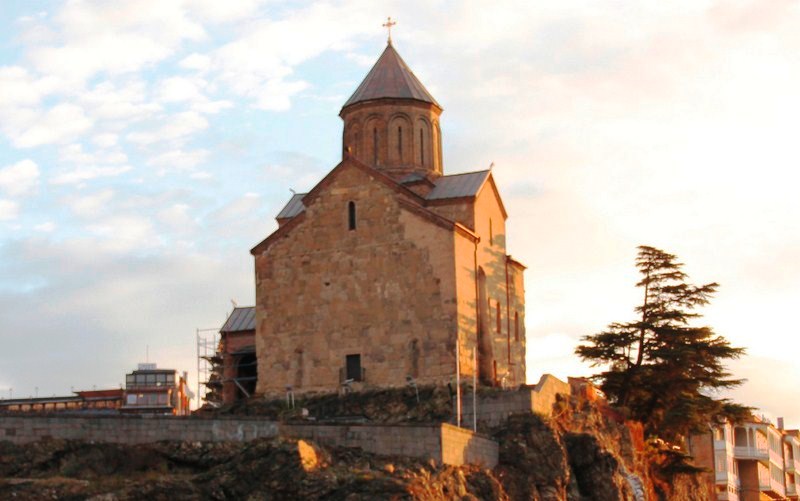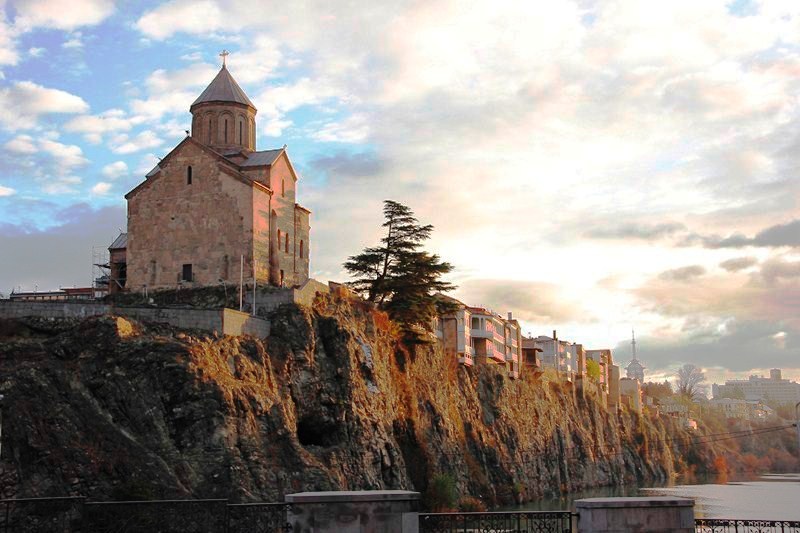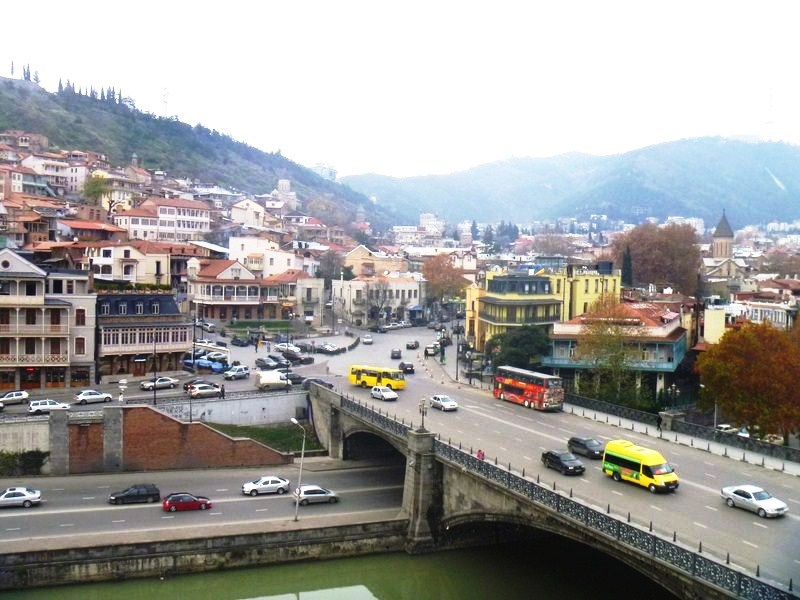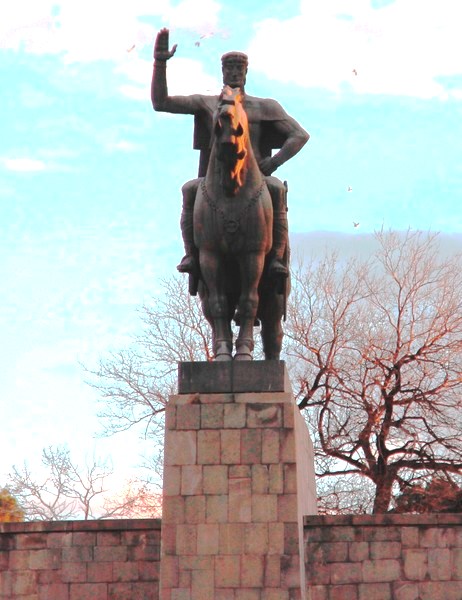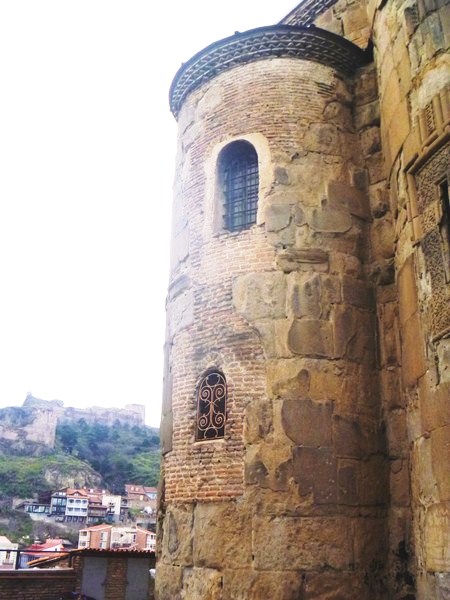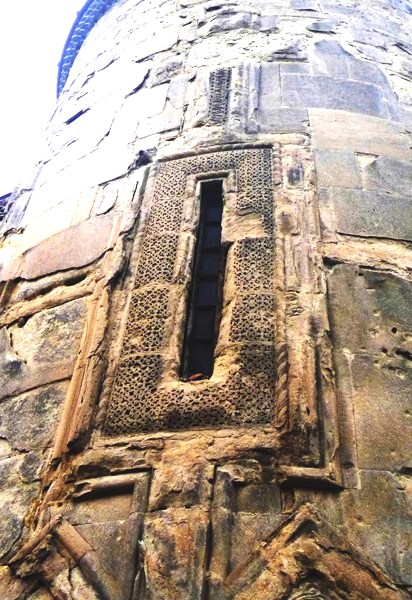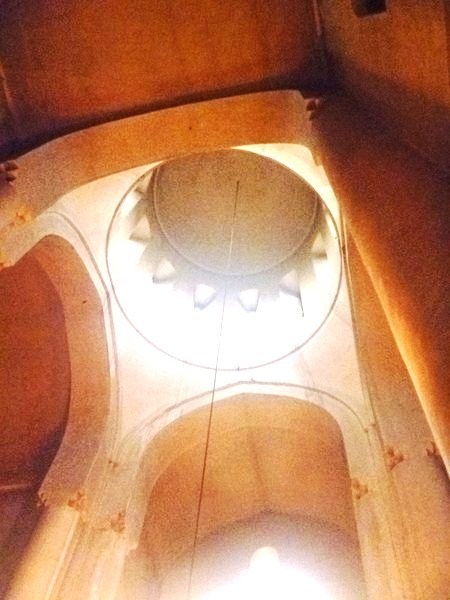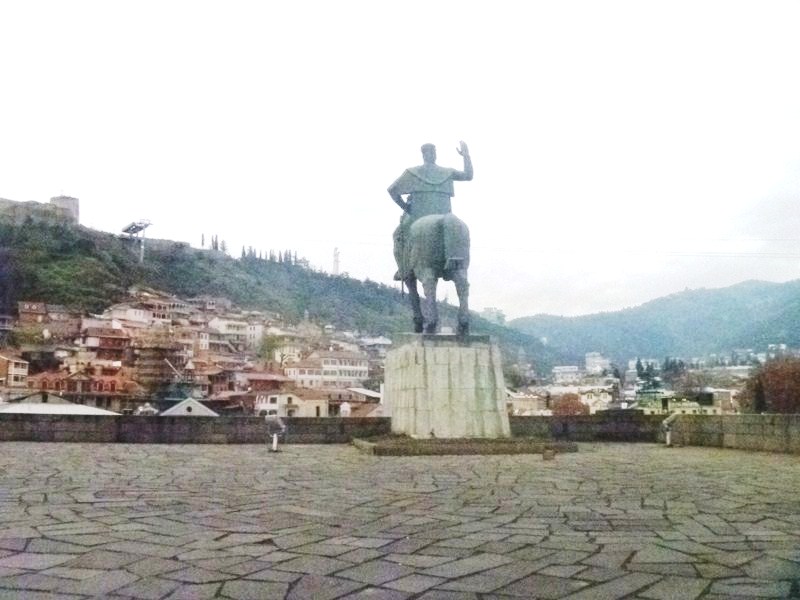It was now the last whole day of our stay in Georgia and I reserved it for a walking tour around Tbilisi. As the historic neighborhood of Metekhi, located on the strategic elevated cliff that overlooks the Mtkvari River, was just near Meidan Square and my hostel, it was the first place I visited. Joining me was Filipina expat Ruby Bebita.
The district, one of the earliest inhabited areas on the city’s territory, was, according to traditional accounts, the site of a church, fort and palace which served as the king’s residence, all erected by King Vakhtang I Gorgasali. King David the Builder also had a palace and church here too. It was also the site of the burial place of 5th century martyr St. Shushanik, tortured by her husband in 544 for refusing to convert to Zoroastrianism. However, none of these structures survived the Mongol invasion of 1235. The name metekhi, which dates back to the 12th century, literally means “the area around the palace.”
The cliff is connected to the opposite, right embankment of the Mtkvari River, via the reinforced concrete Metekhi Bridge whose construction, in 1951, at the place of the two older bridges, unfortunately destroyed a unique complex of various structures and buildings dating from the 17th to 19th centuries. However, the city’s government recently announced its intention to restore this part of historic Old Tbilisi as it was in the first half of the 20th century. Legend has it also that the Metekhi cliff was a site of the 8th century martyrdom of Habo, Tbilisi’s patron saint. A small church in his honor is located at the foot of the cliff.
Resting on top of the hill is the small and extant Metekhi Church of the Assumption and the equestrian statue of King Vakhtang I Gorgaslan (created by sculptor Elguja Amashukeli in 1961). The church, built by the Georgian king St Demetre II Tavdadebuli (the Self-Sacrificing) between 1278–1284, is somewhat an unusual example of a domed Georgian Orthodox church.
Later damaged and restored in the 17th, 18th, and 19th centuries (mostly employing brick), King Rostom (reign: 1633-1658) fortified the area around the church with a strong citadel and garrisoned it with some 3,000 soldiers. When Russian rule was established in 1801, the church lost its religious purpose and was used as a barracks. In 1819, the citadel was demolished and replaced by a new building which functioned as the infamous jail down to the Soviet era.
In 1938, the jail was closed but the church was preserved. However, in the later part of Soviet period, the church was used as a theater. In 1988, the church became functioning again after a popularly supported campaign aiming at the restoration of the church to the Georgian Patriarchate.
The Metekhi church, a cross-cupola church (a style most common throughout the Middle Ages) made with brick and dressed stone, is somewhat anachronistic with its three projecting apses in the east facade and the four freestanding pillars supporting the cupola within.
The mostly smooth facade has decorative elements concentrated around the windows of the eastern apses. Horizontal bands, serving as a unifying element below the gables, run around all four sides. The north portico of the main entrance was built at the same time as the rest of the church.
Inside the church are some interesting icons. To the left of the iconostasis (icon screen) is the tomb of the Christian martyr St Shushanik. Watching the people pray inside this church was a fascinating sight as the worshipers prayed with such incredible passion. Entry was free and photography was allowed. Outside, we had great views of ‘Old Tbilisi. As this interesting church is separated by a bridge from the busy street of Tbilisi, the place is not very noisy and so it can be better appreciated.
Qatar Airways has daily flights from Diosdado Macapagal International Airport (Clark, Pampanga) to Tbilisi (Republic of Georgia) with stopovers at Hamad International Airport (Doha, Qatar, 15 hrs.) and Heydar Aliyev International Airport (Baku, Azerbaijan, 1 hr.). Website: www.qatarairways.com.

